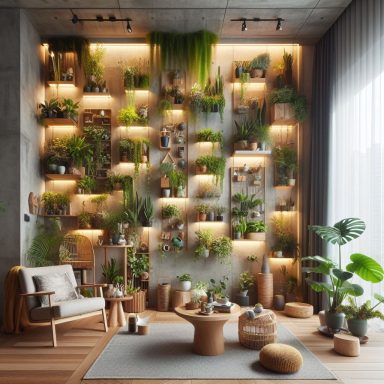DIY Vertical Garden Projects
Steps:
1. Choose and Prepare the Pallet:
- Select a pallet that is in good condition. Make sure it hasn't been treated with harmful chemicals.
- Sand the pallet to remove rough edges and splinters.
- Paint or seal the pallet with an exterior finish to protect it from the elements.
2. Install Landscape Fabric:
- Lay the pallet flat on the ground or on a work surface.
- Cut a piece of landscape fabric to fit the back and sides of the pallet.
- Staple the fabric to the back and sides of the pallet, creating pockets for soil.
3. Add Soil:
- Fill each pocket with potting soil, pressing it down gently to ensure it's packed.
- Make sure the soil is evenly distributed, and there are no gaps.
4. Planting:
- Decide where you want each plant to go and plant them in the soil pockets.
- Consider using a variety of plants to add visual interest.
5. Vertical Placement:
- Once the plants are in place, stand the pallet upright against a wall or fence.
- Make sure it's stable and secure, anchoring it if necessary.
6. Watering and Maintenance:
- Water your vertical garden regularly, ensuring that the soil stays moist.
- Monitor the growth of your plants and trim or replace them as needed.
Variations:
Herb Wall:
- Use the pallet to create a vertical herb garden. Plant herbs like basil, mint, and rosemary for a functional and fragrant display.
Succulent Wall:
- Instead of traditional plants, use succulents for a low-maintenance and modern look.
Shoe Organizer Garden:
- Repurpose a hanging shoe organizer by filling each pocket with soil and planting small herbs or flowers.
Gutter Garden:
- Attach gutters to a wooden frame vertically and plant directly into the gutters.
Remember to tailor the project based on your space, preferences, and available materials. Vertical gardens are versatile, and you can get creative with the design to suit your style!
We need your consent to load the translations
We use a third-party service to translate the website content that may collect data about your activity. Please review the details and accept the service to view the translations.
















